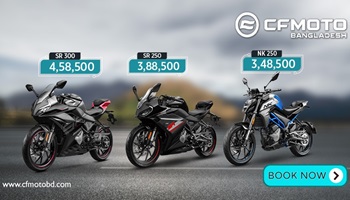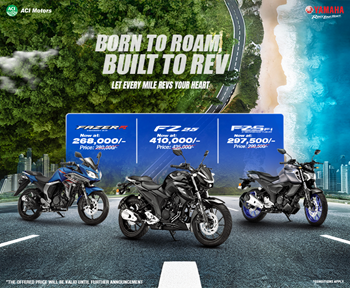What is a V-Twin Engine in Motorcycle?
What is a V-Twin Engine in Bike? How many cylinders does a V-twin have? Why do V twins sound so good? What are the advantages of V-twin engine? Why are V twins so popular? Are V-twin engines balanced? Are V-twin engines good? What are the advantages of V-twin engines? Is a V-twin better than a single cylinder? What are the disadvantages of V engines? We answer all these questions and this content reveals literally everything about the motorcycle’s V-Twin engine.
What Does V-Twin Engine Mean?
A V-Twin engine is a two-cylinder piston engine. People also call it a V2 engine. Originated back in the late 1880s and is mostly found in bikes. You can also find them in other sorts of vehicles as well as industrial machines. In this type of engine, the cylinders are arranged in a “V” configuration & as there are 2 cylinders and hence named a V-Twin engine. Both cylinders indeed share a common crankshaft. They are mostly installed longitudinally. However, sometimes there can be transverse installation as well.
How many cylinders are in a V-twin?
As we’ve already revealed, there are 2 cylinders in a V-Twin engine. They share a common crankshaft but have separate cylinder heads. Arranged in a V-shape configuration, the cylinders aren’t parallel to each other.
What is the Advantage of a V-twin Engine?
V-Twin engines in bikes benefit users in many ways. The pros of a V2 engine are:
- Its strong low-end and mid-range torque ensures excellent acceleration and pulling power.
- Offers better ergonomics, handling, and aesthetics thanks to its flexible frame design.
- Its low center of gravity helps maintain a better balance.
- Appears with a more compact engine design.
- Users get the privilege of a relaxed and enjoyable riding experience with its smooth and linear power-delivering capability.
- Enables the bike to perform better on straight roads.
- Provides a classic motorcycle experience thanks to its ability to produce an appealing deep and throaty exhaust note.
- With a characteristic vibration pattern, it increases the feeling of power and connection with the motorcycle.
- Can come with either air-cooled or liquid-cooled systems. The aforementioned system simplifies the design and reduces weight. The latter guarantees enhanced cooling efficiency.
- As the cylinders in this engine use a common crankshaft and crankpin that helps to reduce the overall weight.
- Helps cool the engine more effectively and efficiently. It’s because of ensuring better airflow around the cylinders.
- Doesn’t only feature an appealing classical outlook but also wide opens the customization options for the users.
- Lets the riders maintain higher gears without shifting them frequently. It’s because of its strong torque at low RPMs.
- Highly suitable for long-distance journeys thanks to its ability to provide sheer comfort.
- This sort of bike has a rich heritage in the motorcycling world.
What are the Disadvantages of V2 Engines?
Wait, wait, there are some bothering drawbacks as well. Indeed, every single thing must have its cons along with pros. The problems of V-Twin engines include:
- Relatively costlier than a single-cylinder engine. In fact, the production cost is almost double than its counterpart.
- Associated with more power loss due to friction. Because it requires additional components like carburetors, valvetrains, and cylinder heads. Also features a longer wheelbase.
- Reduced maneuverability, handling, and cornering capabilities because of heavyness.
- Twin-cylinder engines also slow down the bikes during cornering.
- The bikes with such engines tends to be larger and lengthier in size.
- Its front cylinder blocks the rear cylinder which makes its cooling mechanism insufficient.
- Appears with a more complex design as well.
- Sometimes produces excessive vibration as well as heat.
- The maintenance is relatively tougher and so is the maintenance cost.
- Makes the motorcycle bulkier and heavyweight compared to a single cylinder.
Is V-twin better than Single Cylinder?
First of all, V-Twin has a higher production cost. The engine system is complex and the maintenance is tougher. Just like the manufacturing cost, the maintenance cost is also expensive. It’s all relatively with a single-cylinder bike. So, if you have a budget issue, then a single cylinder may be well-suited for you.
But if you prefer performance and don’t have a budget problem, then the V-Twin engine is definitely better. V2 engines are able to generate a lot more power. The engine is quieter with lower vibrations. Ensures longer lifespan due to less wear. It burns the fuel cleaner and runs cooler with less heating issues. So, overall V2 engine is better but costly.
What is the Difference between V-twin and L twin?
L-Twin engines also come with 2 cylinders. However, they are placed at an angle from each other that forms a “L Shape.” In this type of engine, some cylinders stay at a 45-degree angle while others stay at a 90-degree angle. Generally, comes with a 90-degree layout and 270-degree firing order. One cylinder is horizontally mounted in the L-Twin. Actually, with the V shape titled forward, the front cylinder locates nearly parallel to the ground. Thus the term L-Twin appeared (Ducati).
Is a Parallel-twin Better than a V-twin?
Parallel-twin or inline-twin engines are very popular configurations at the moment. The two cylinders share the same head and are parallel to each other, unlike V-Twin. The Parallel-twin engines are more compact and have fewer moving parts. Thus they are more affordable based on production cost. Also available in all shapes and sizes. Don’t forget its ability to pump out impressive power and torque outputs. On the other hand, V-Twin engines are expensive but uncompromisable in terms of sound, performance, and style.























